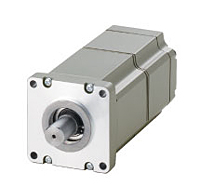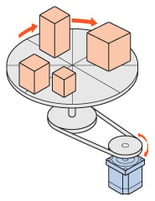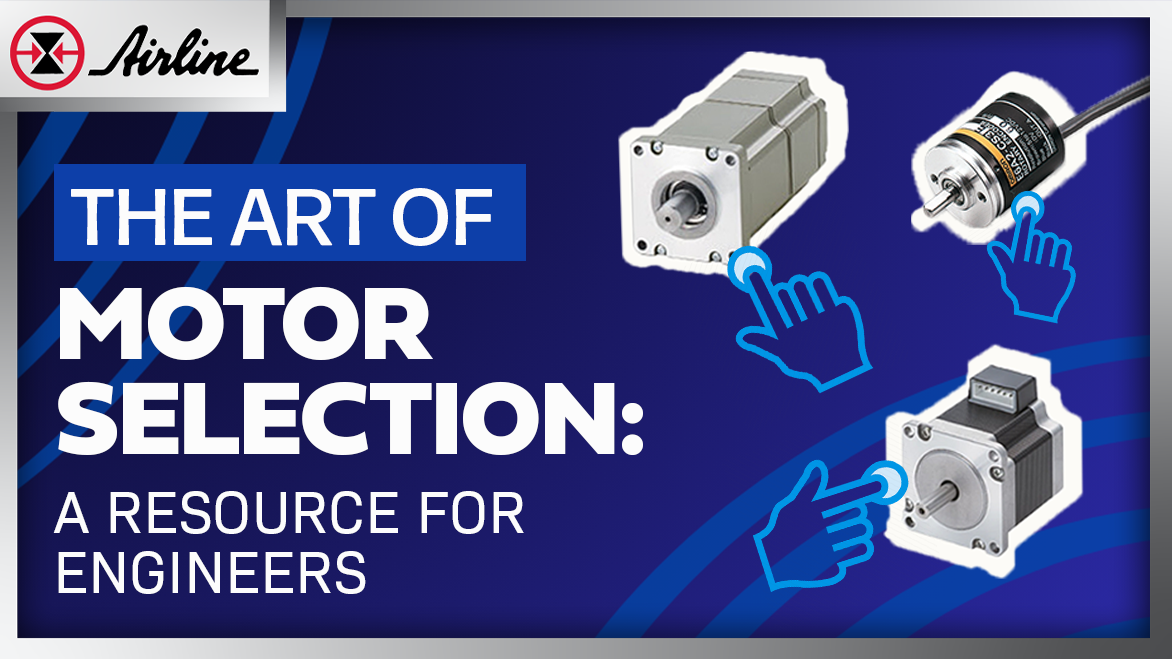For almost two hundred years, electric motor technology has evolved quietly yet significantly, revolutionizing industrial manufacturing with unmatched efficiency. However, picking a motor that fits your budget and the machine's complexity is key, especially for robotics and automated manufacturing. We see selecting the right motor as an art that's rarely taught and learned through experience. Choosing correctly leads to smooth equipment performance, and choosing wrong can lead to unforeseen issues. This blog post will give you an overview of different motor technologies and tips to help you pick the best option for your needs. Let's get started.
Jump to a Section
Stepper Motors | Hybrid Motors | Servo Motors | Factors in Motor Selection | Steps to Selecting the Right Motor | Cost Breakdown
🔎 Explore motion control products
Key Takeaways✔️ Selecting the right motor, such as a stepper, hybrid, or servo motor, is crucial for operational efficiency and cost-effectiveness. Understanding each type's mechanism and applications is key to making an informed choice. ✔️ When choosing a motor, it's crucial to consider load orientation, speed, and positioning, as well as torque, precision, control system compatibility, and cost, to ensure the selection meets both technical and economic needs. |
Understanding Motor Types
Electric motor control technology is tricky and offers many options, such as stepper motors, servo motors, and hybrid motors. Each is good for different uses. Let's review each one.
Stepper Motors

What is a Stepper Motor?
A stepper motor, also known as a step motor or stepping motor, distinguishes itself by rotating in discrete angular increments rather than in a continuous motion.
These motors utilize neodymium magnets, which are actuated by a drive. The image below shows a typical setup for driving a stepper motor.


This is a Wikipedia Commons animation of a simplified stepper motor. The rotor turns in actual steps as each electromagnet (labeled 1 - 4) is energized. In Frame 1, the rotor's teeth are aligned to electromagnet 1, which is slightly offset from the right electromagnet 2. In Frame 2, the top electromagnet 1 is turned off, and the right electromagnet 2 is energized, pulling the teeth into alignment with it. This continues with electromagnets 3 and 4. This example has a rotation of 3.6° per mechanical step, and a full rotation will take 100 steps.
For another example, in the case of a five-phase motor, this means that the drive sends 500 pulses for each revolution. These motors feature a 0.72-degree mechanical step.
A typical stepper motor features a quantity of 200; 1.8-degree mechanical steps. While the technology has a long history, it has progressively improved with advancements in microchip technology. These advancements enable the motors to accomplish more tasks, occupy less space, and offer compact packaging. Stepper motors are designed as open-loop systems, eliminating the need for feedback to function. This makes them a robust and reliable option for many applications.
Open vs. Closed Loop
Open-loop system in motor technology is like sending a car to a destination without GPS. You know where it should go, but there's no way to check if it gets there correctly. The directions are given from the driver to the motor, and once sent, there's no further communication. Imagine a motor system that not only tells itself where it's supposed to go but also constantly checks and knows where it is at all times. That's what we call a closed-loop system in motor technology. It essentially transforms the motor into a smart gadget that uses an encoder to relay its position back to its driver. This means greater accuracy as the driver is always informed about the motor's actual location and where it aims to be. |
When to Use a Stepper Motor
Stepper motors are distinguished by their high power density. Therefore, their performance is often rated based on speed and torque rather than the traditional 'horsepower.' This means focusing on how quickly stepper motors work, focusing on their strength, speed, and the magnets used.
A stepper motor's notable characteristic is its constant-current device operation. At zero or low speed, it can deliver its maximum torque. However, as the speed is cranked up, the torque wanes. This is attributed to the counter electromotive force (EMF), a consequence of the magnetic field. As the field is commutated, it throws back a voltage or a power level, which is identified as the electromotive force. Thus, as the motor gains speed, more force is generated, prompting the motor to counter that force, resulting in the output shaft providing lesser torque.
Stepper motor's capabilities should never be understated, particularly their repeatable positioning, which is nothing short of astonishing. Micro-stepping enables extraordinarily precise positioning within the motor's micro steps.
|
Why do you use a stepper motor? 📈 Survey Says: Easy to use: 34% |
Servo Motors

What is a Servo Motor?
A servo motor (also combined as servomotor or just called servo) is either a rotary or linear actuator designed for the precise control of position, velocity, and acceleration within a mechanical system. It is crucial in a servomechanism featuring a motor paired with a position feedback sensor. Additionally, it demands a sophisticated control device, typically a specialized module crafted for servo motor applications.
At the heart of its operation, the servo motor is an error-based system that requires an external disturbance to kick-start its commutation. This disturbance could be an input in the form of a positioning command or mechanical influence on the motor shaft.
The system's unique characteristic is that it reacts proportionally to the opposition it faces—the stronger the opposition, the more energy is expended to maintain the position.
Elaborating on the servo motor's operation, when a positioning command is issued, the system compensates by injecting energy equivalent to the deviation in the system. Triple-fold versatility is offered in its modes of operation, with the choice between speed mode, torque mode, and position mode at your disposal.
Exploring the concept of resonance within this context, it is generally seen as an undesirable phenomenon. The system's attempt to bypass resonant frequency involves the jumping of frequencies. For instance, in a 1.8-degree mechanical motor, the rate of one to two revolutions per second falls within the resonant realm. Consequently, the motor is instructed to commence at three revolutions per second, situating us above the resonant frequency, a distinct attribute of servo motors.

When To Use a Servo Motor
Servo motors are better suited for complex systems that need precise feedback. As mentioned earlier, stepper motors operate in an open-loop control system without feedback. For some applications, the absence of feedback might constrain a stepper motor's effectiveness, resulting in missed steps, positioning inaccuracies, or requiring restart or recalibration to correct these errors.
Conversely, servo motors paired with an encoder are closed-loop capable of swiftly adjusting to any designated angle when they receive a command from the controller, irrespective of their initial position. While incorporating an encoder and controller into a servo motor system does introduce additional expenses, these components significantly enhance the system's performance in terms of speed, power, and precision, leveraging the motor's basic capabilities to their fullest extent. If the servo can not meet the system demands, there will be an error - the others won't.
Hybrid Motors

What is a Hybrid Motor?
The hybrid motor (also called a hybrid servo motor or hybrid stepper motor) combines the attributes of a stepper motor and a servo motor. It still primarily operates as a stepper motor but includes an encoder feedback system, giving it closed-loop capabilities. The hybrid motor records its positioning in real time and boosts performance while keeping complexity and costs lower than a servo motor.
The encoder is situated on the stepper's rear end, facilitating a robust feedback system. A hybrid stepper adopts certain functional features of a servo, enhancing its positioning capabilities. For example, commanding the motor to move 17 inches initiates the action. The motor then uses the encoder feedback to confirm if the task is completed. If not, the process is repeated until the desired position is achieved; if not completed - it causes an error.
 A hybrid stepping motor encompasses three specific loops: speed, position, and torque. Whether you're deploying a servo or a stepper, they're primarily used for precise positioning complemented with superior speed regulation.
A hybrid stepping motor encompasses three specific loops: speed, position, and torque. Whether you're deploying a servo or a stepper, they're primarily used for precise positioning complemented with superior speed regulation.
Regarding its accuracy, if the motor is rated at 3000 rpm, it will control the speed within the precision of plus or minus three revolutions per minute, equivalent to an accuracy of 0.01%.
In position mode, all three loops are fully operational. The intelligent control of these loops is achieved through a sophisticated PID (proportional, integral, derivative) algorithm, a highly efficient second-order equation. Each of these features is meticulously designed based on feedback. The relations are simple yet effective - current is directly proportional to torque, and voltage is directly proportional to speed. This understanding highlights how efficient loop closures are achieved.
When To Use a Hybrid Motor
When pushing a traditional stepper motor to its limits, a step can be missed, or other issues can occur. However, a servo motor might be an overshoot with added costs and complexities. A hybrid motor is a nice middle ground that improves accuracy and allows stepper motors to be run at higher RPMs (revolutions per minute).
Factors in Motor Selection
When selecting a motor to meet your specific needs, many variables must be considered. The choice must be cost-effective, simple enough for your control system, and capable of performing the tasks at hand.
Key considerations include:
✔️ Load requirements (torque and speed)
✔️ Required precision and accuracy
✔️ Control system compatibility
✔️ Cost-effectiveness
Steps to Selecting the Right Motor
Select the motor that best fits your precise load orientation, speed, and positioning requirements. Here's a simplified approach to calculating the necessary specifications for your motor:
1. Determine Load Orientation and Position:
Determine how your load is mounted and its movement path.
2. CalculateSpeed Requirement Patterns:
Calculate how fast your load needs to move to meet your operation's productivity.
3. Run Torque Calculation:
The torque for acceleration formula is essential—TAcc = JS(Vf - Vi) / (Δt x 2.610^-3) where JS is the system inertia, Vf and Vi are the final and initial velocities, and Δt is the time to make a move.
Cost Breakdown
![]() Price plays a pivotal role in motor selection; make sure you are choosing the correct motor for a successful application :
Price plays a pivotal role in motor selection; make sure you are choosing the correct motor for a successful application :
✔️ Stepper motors lead as the most economical option for static precision.
✔️ Hybrid steppers offer a middle ground with feedback-assured positioning.
✔️ Servos, albeit pricier, provide unparalleled speed, precision, and control capabilities using intelligent formulas.
Considering all factors and your application's needs will lead to success. Remember, choosing the wrong motor can increase costs, time, and frustration. Make an informed choice; it can mean the difference between a seamless operation and one fraught with issues.
Still have questions? Contact us today! Our team of experts is available for personalized advice based on your specific application's needs.
Resources








Leave Comment